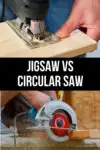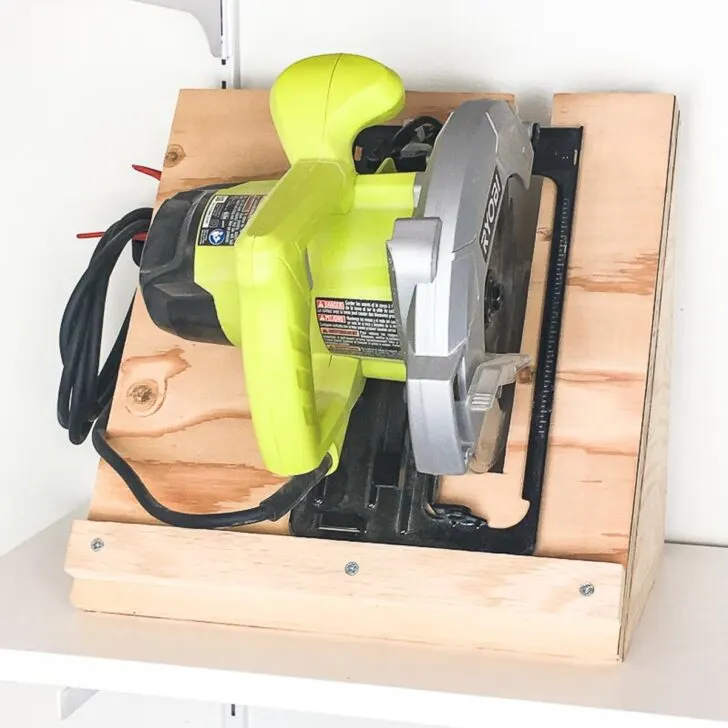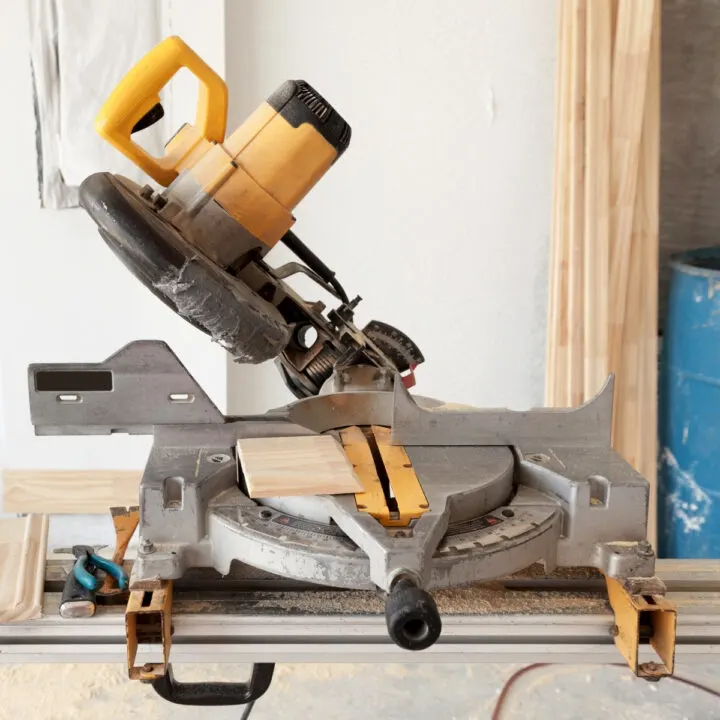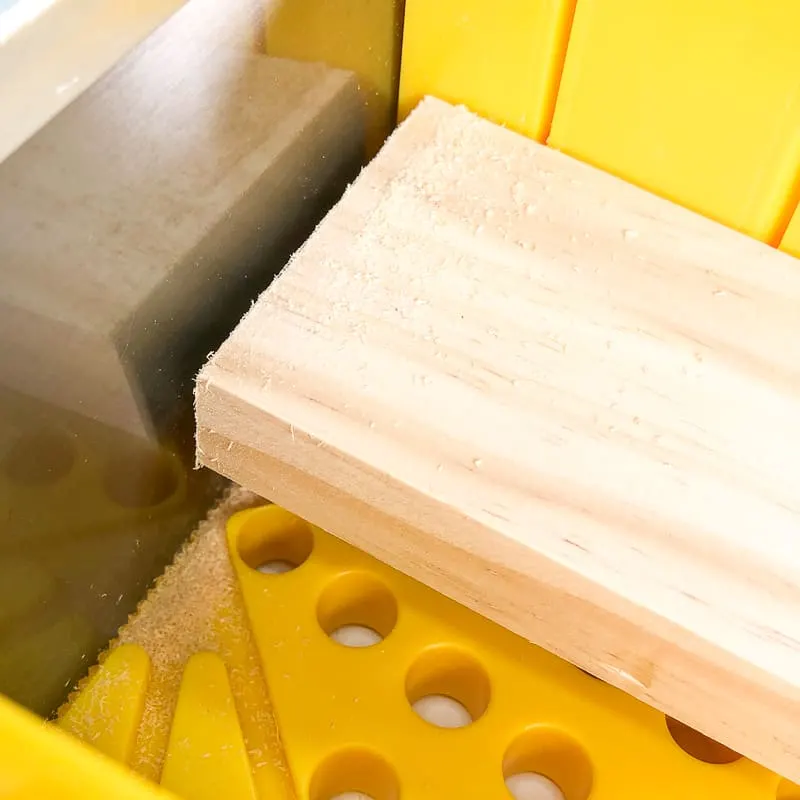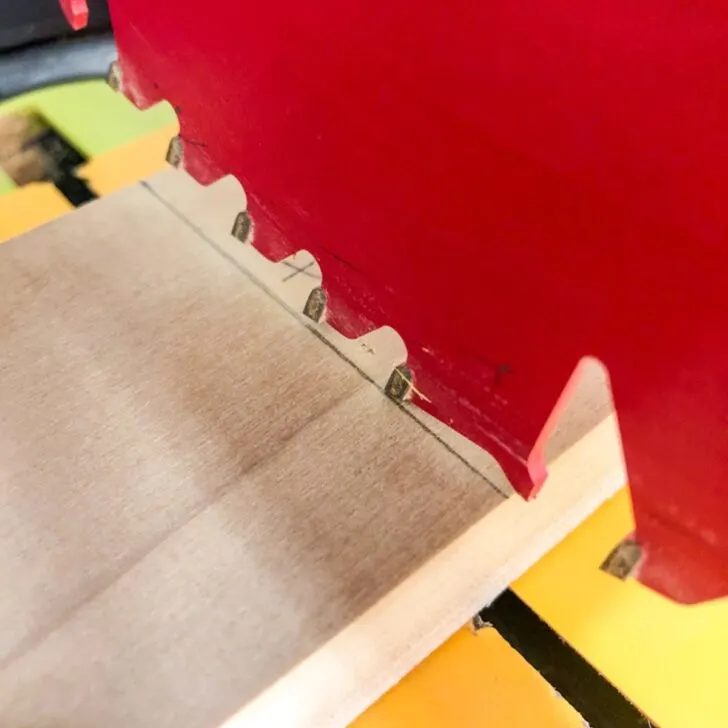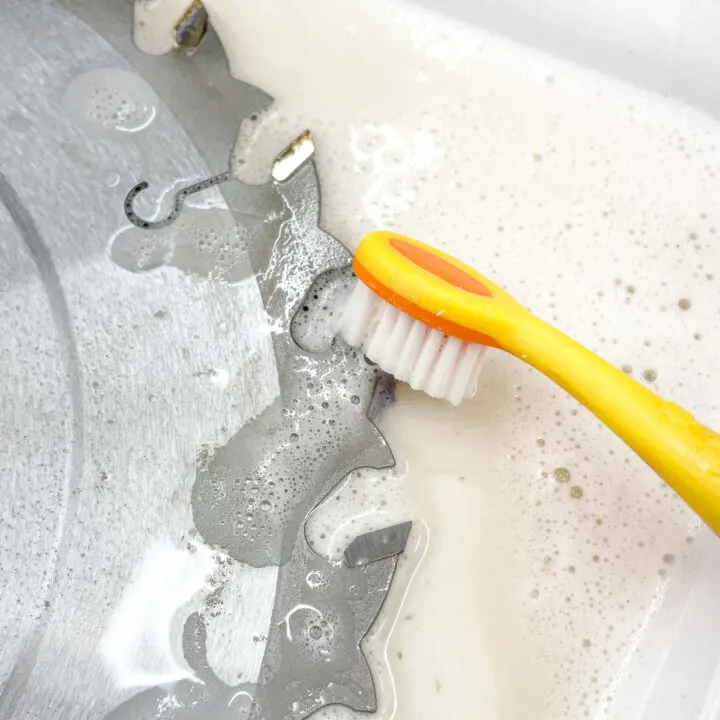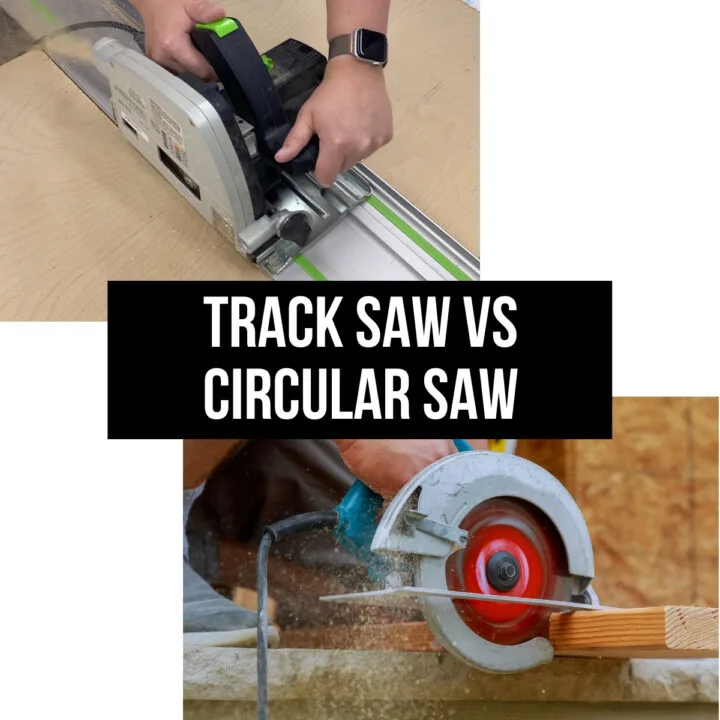Learn the difference between a jigsaw vs circular saw, and find out which one is right for your project!
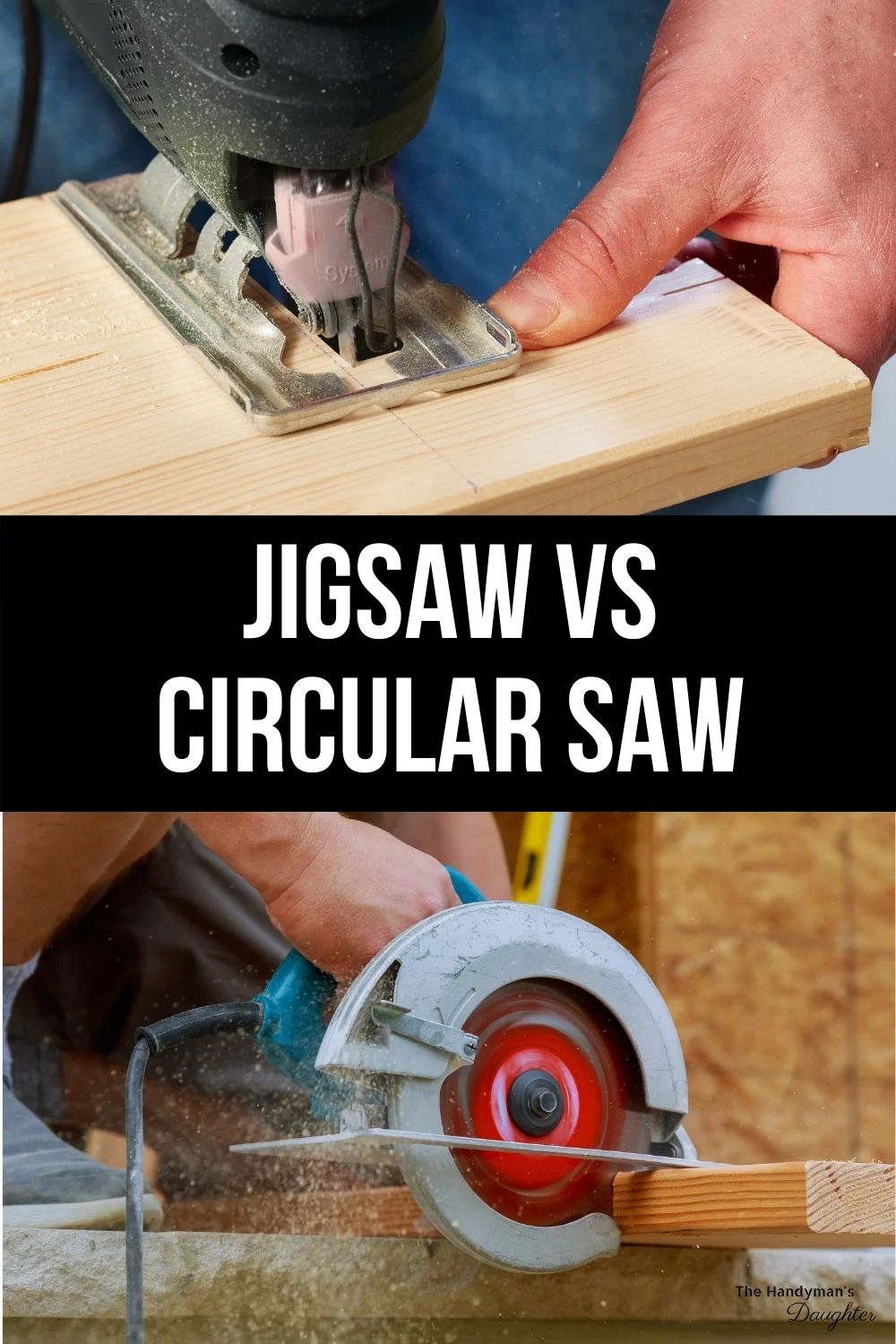
The jigsaw and circular saw are both effective, portable, and versatile power tools. However, the two are not interchangeable. To get the most out of these tools, it's helpful to understand their strengths and weaknesses.
If you've been debating between buying a jigsaw vs circular saw for your first woodworking project, this article will point you in the right direction! I'll compare the two different tools so you can decide for yourself which one would work best for your situation.
This post contains affiliate links for your convenience. Purchases made through these links may earn me a small commission at no additional cost to you. Please visit my disclosures page for more information.
What's the Difference between a Jigsaw vs Circular Saw?
The circular saw and jigsaw have some similarities. Both are handheld power tools that can cut wood, PVC and some softer metals. However, that is where the similarities end.
A jigsaw has a straight vertical blade with teeth on one side that moves up and down. A circular saw has a round blade with teeth around the outside edge.
A jigsaw is most often used for curved cuts, because the thin blade can maneuver in tight spots. It's also helpful for cutting notches, because the straight blade cuts to the same point all the way down through the wood.
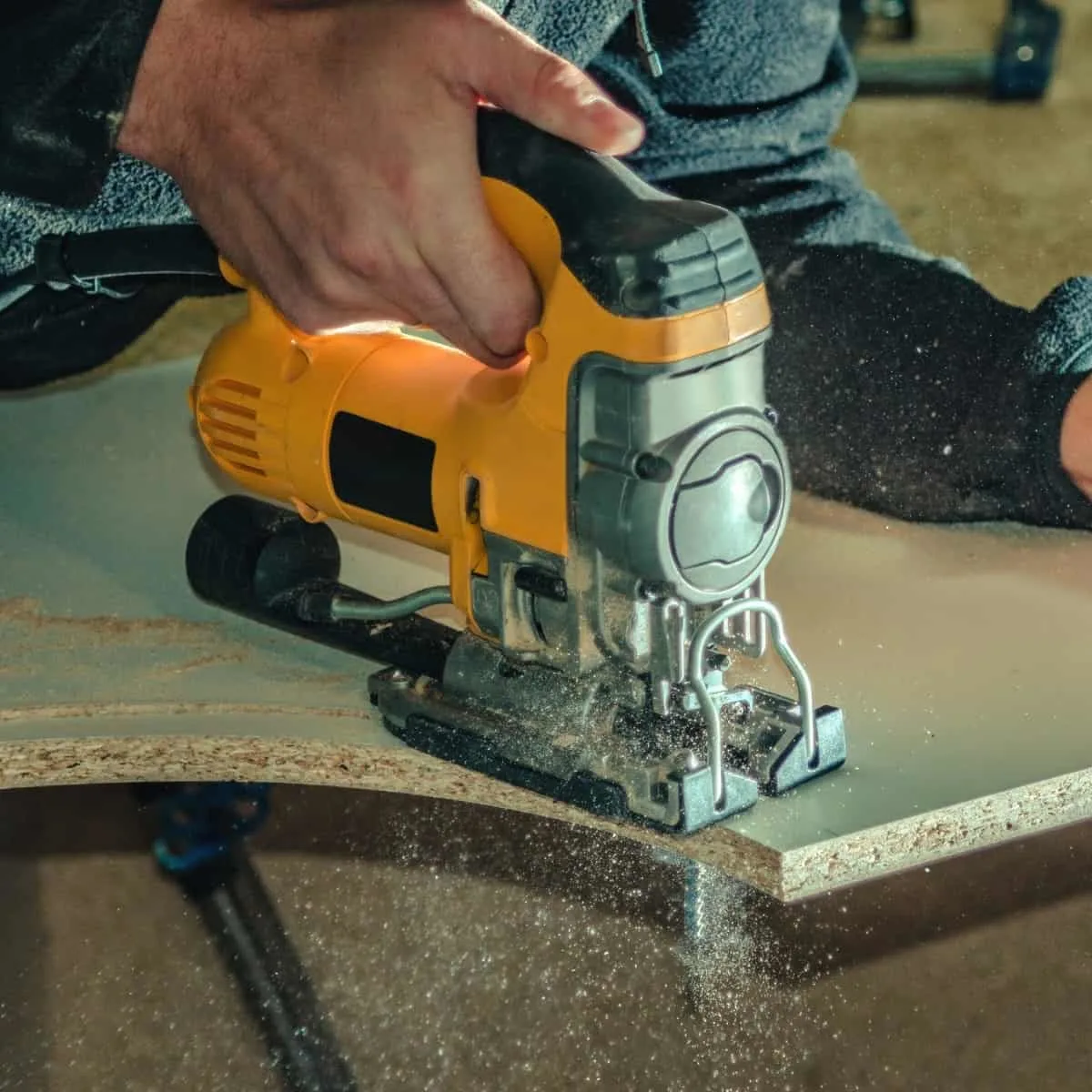
A circular saw is most often used to quickly cut straight lines in lumber or plywood.
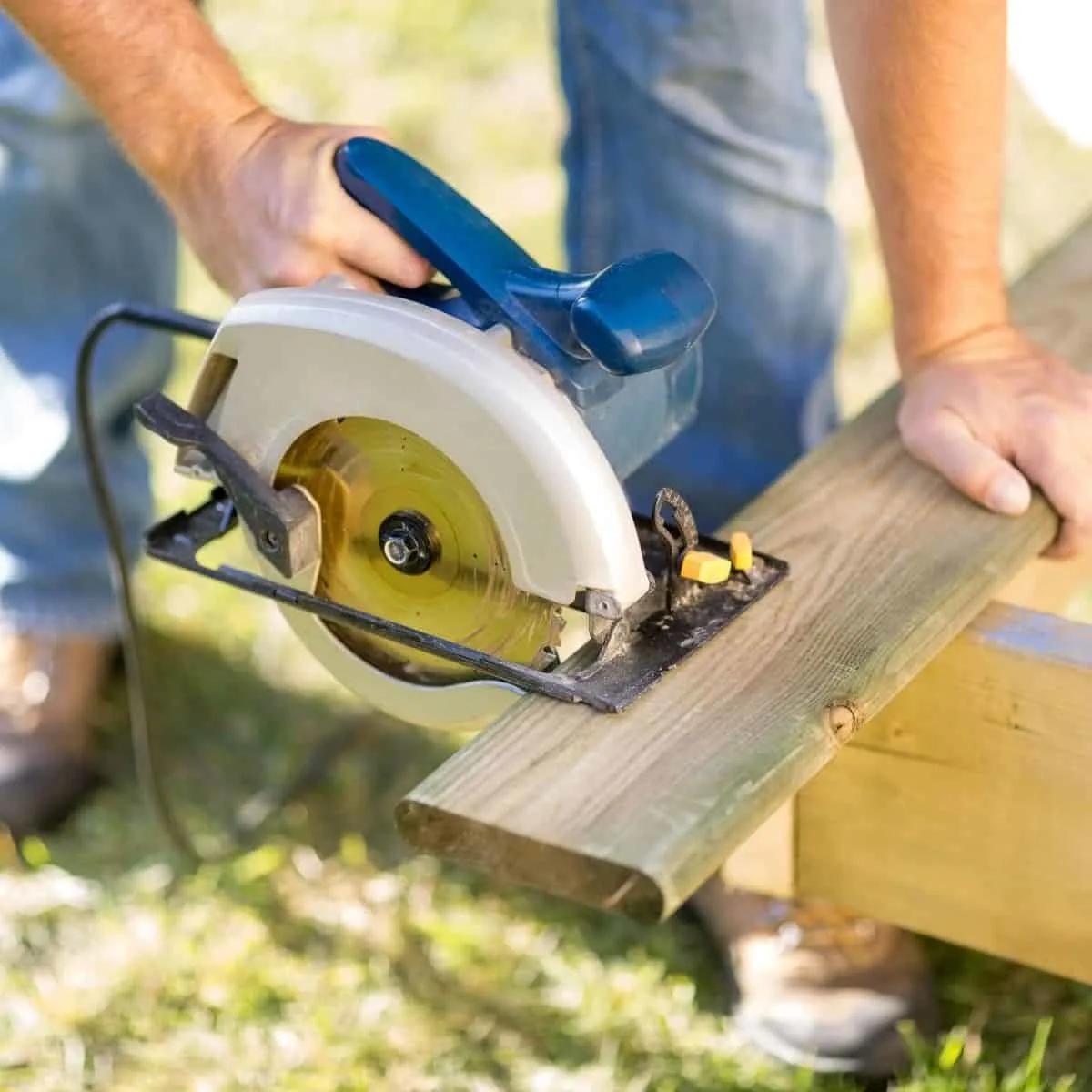
Which Saw Should I Buy First?
I would recommend buying a circular saw first, then picking up a jigsaw when you need to cut curves. A circular saw can make cleaner, more accurate straight cuts for most DIY projects.
However, if you're nervous about using power tools, I would get a jigsaw first. It's much more beginner friendly, and it's less likely to cause injury if you use it incorrectly.
What is a Jigsaw?
A jigsaw is a powered handheld saw that cuts material using a thin, straight blade that moves up and down. Jigsaws can be battery-powered or a corded tool.
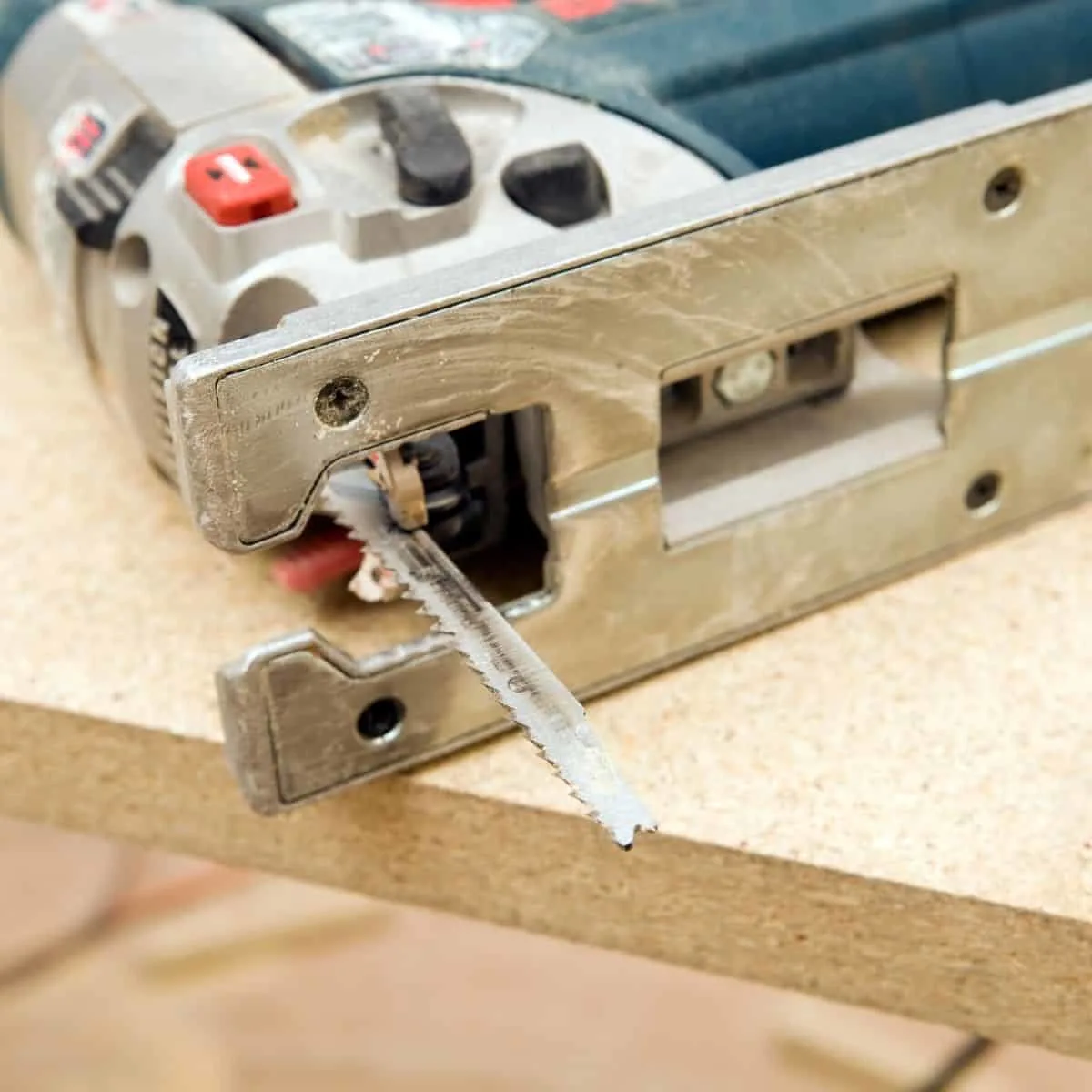
You cannot adjust the depth of the cut with a jigsaw, although you can buy different blade lengths to accommodate different sized materials. A shorter blade is fine for ¾" plywood or lumber, but you'll need a longer one for cutting a 2x4.
You can find my full tutorial on how to use a jigsaw here.
Jigsaw Blades
Speaking of blades, there are two different types: U-shank and T-shank. The "U" and the "T" refer to how the blade locks into the saw. I recommend buying a jigsaw that takes T-shank blades.
Why?
Well, you can insert T-shank blades into the saw with just a flip of a button. It locks into place below the T at the end of the blade, so it can't fall out.
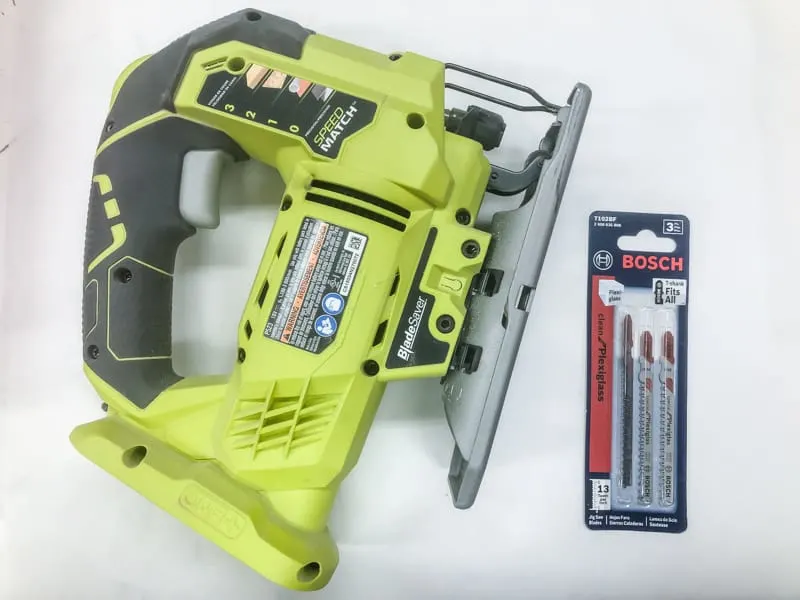
On the other hand, U-shank blades usually require a more complicated installation. You'll need to find the wrench required to loosen the nut, and tighten it down sufficiently so that the blade doesn't fall out. This isn't exactly ideal, as jigsaw blades will can easily break or become dull.
Blade Tooth Count and Type
Jigsaw blades also come in a variety of different tooth counts, also known as TPI (teeth-per-inch). Blades with a lower TPI cut faster but not as clean. Blades with high TPI will cut slower but can leave a smooth edge.
Some blades are designed to cut Plexiglass without cracking, or special metal cutting blade options for soft metals like aluminum.
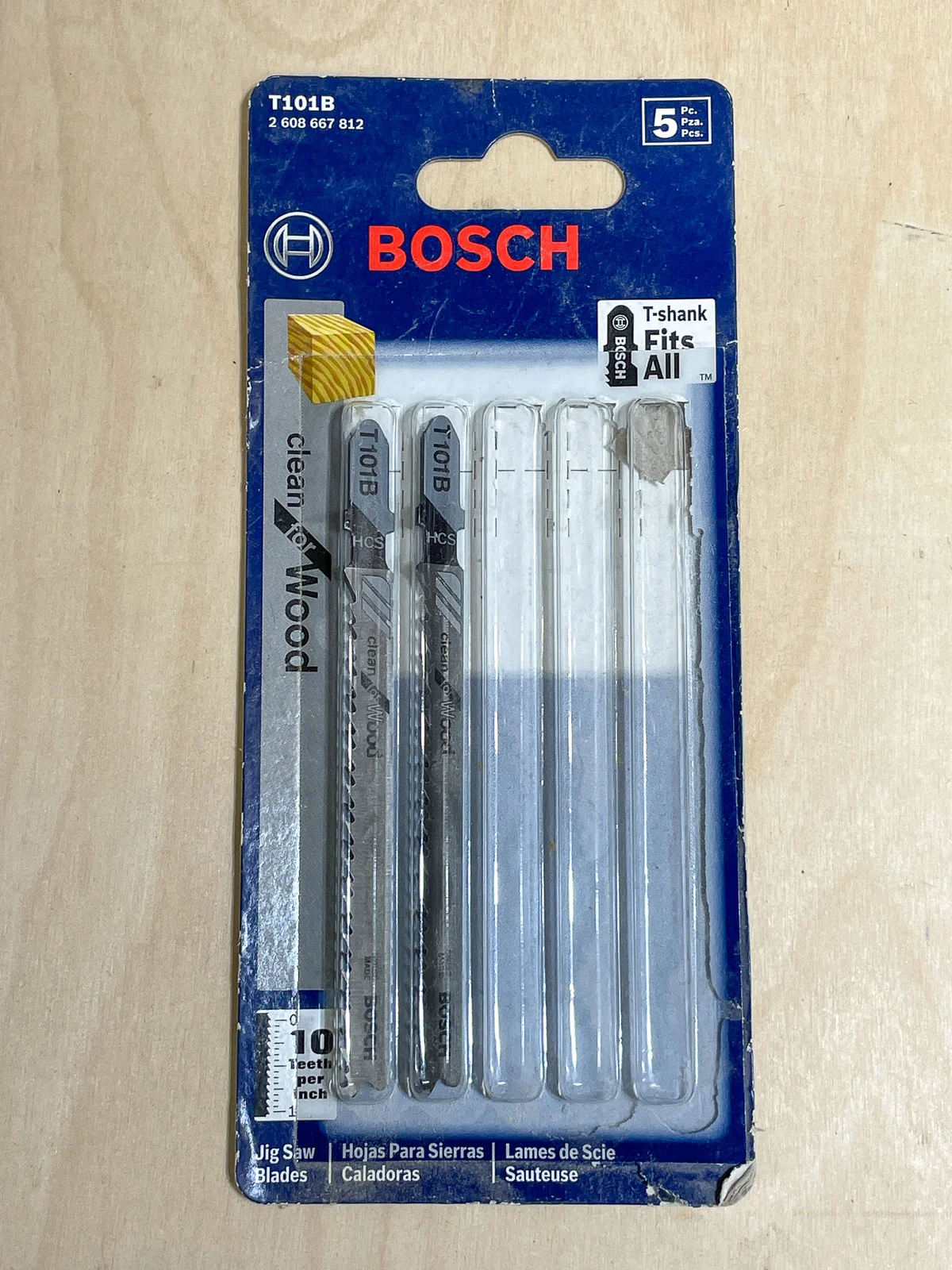
Another thing you should note is the direction of the teeth. Some teeth point up. Others point down. Why does this matter?
Well, teeth pointed up will cut on the up-stroke of the blade. This action will pull the saw into the wood, keeping you steady. However, cutting on the up-stroke also means the rough side of the cut will be on top.
The opposite is true when the cutting edge points down. You won't get as much tear out on top, but you might have greater difficulty controlling the saw, as it will be pushing away from the wood.
When Should I Use a Jigsaw?
Jigsaws have a wide range of uses. With a jigsaw, you can make straight line cuts, beveled cuts, and (with a lot of practice) plunge cuts.
However, where the jigsaw shines is curved cuts, like circles and arches. The jigsaw's ability to cut tight curves and angles makes it similar to the bandsaw and the scroll saw.
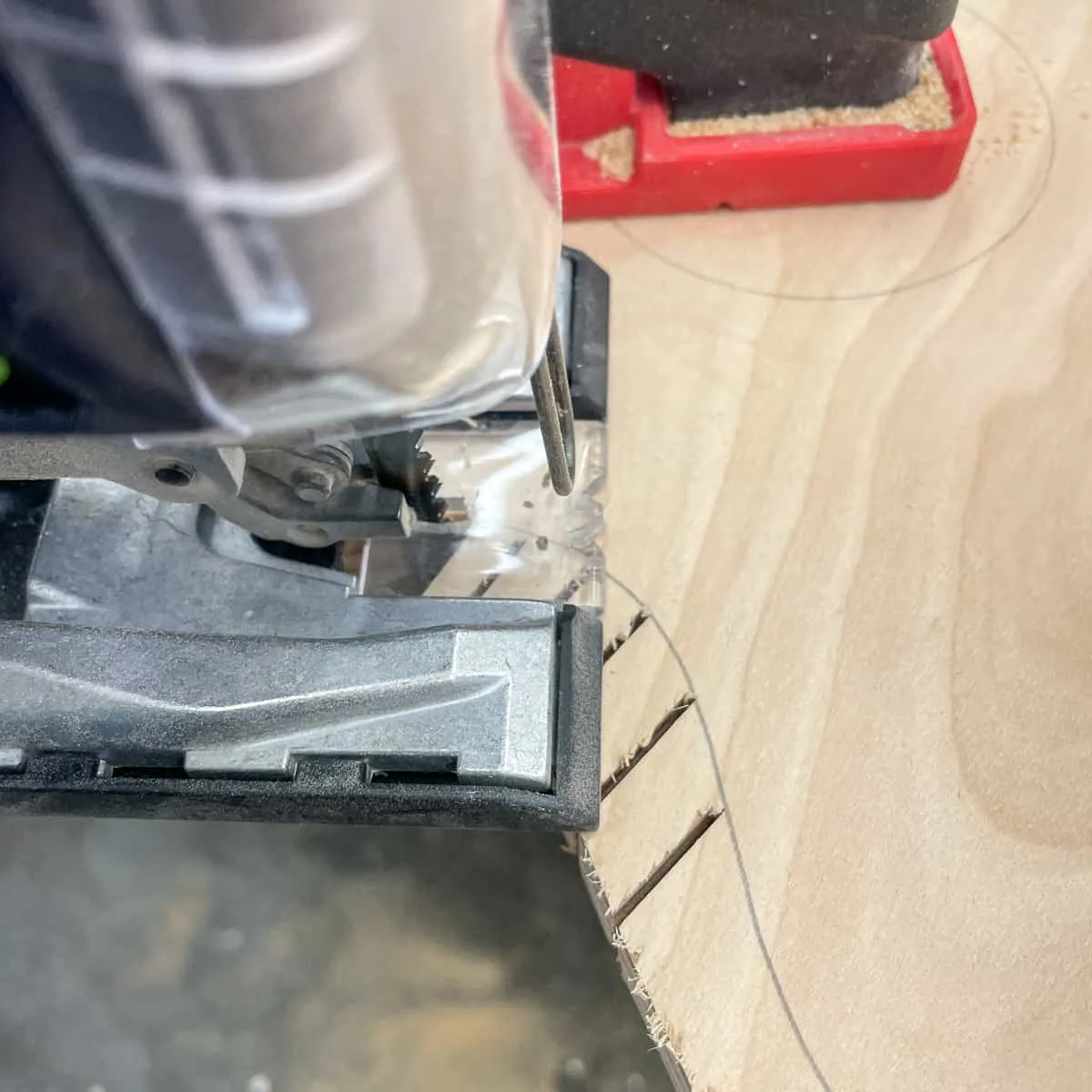
If you're looking to cut circles in wood, or lots of curves like this DIY wooden Christmas tree, then the jigsaw is the tool for you!
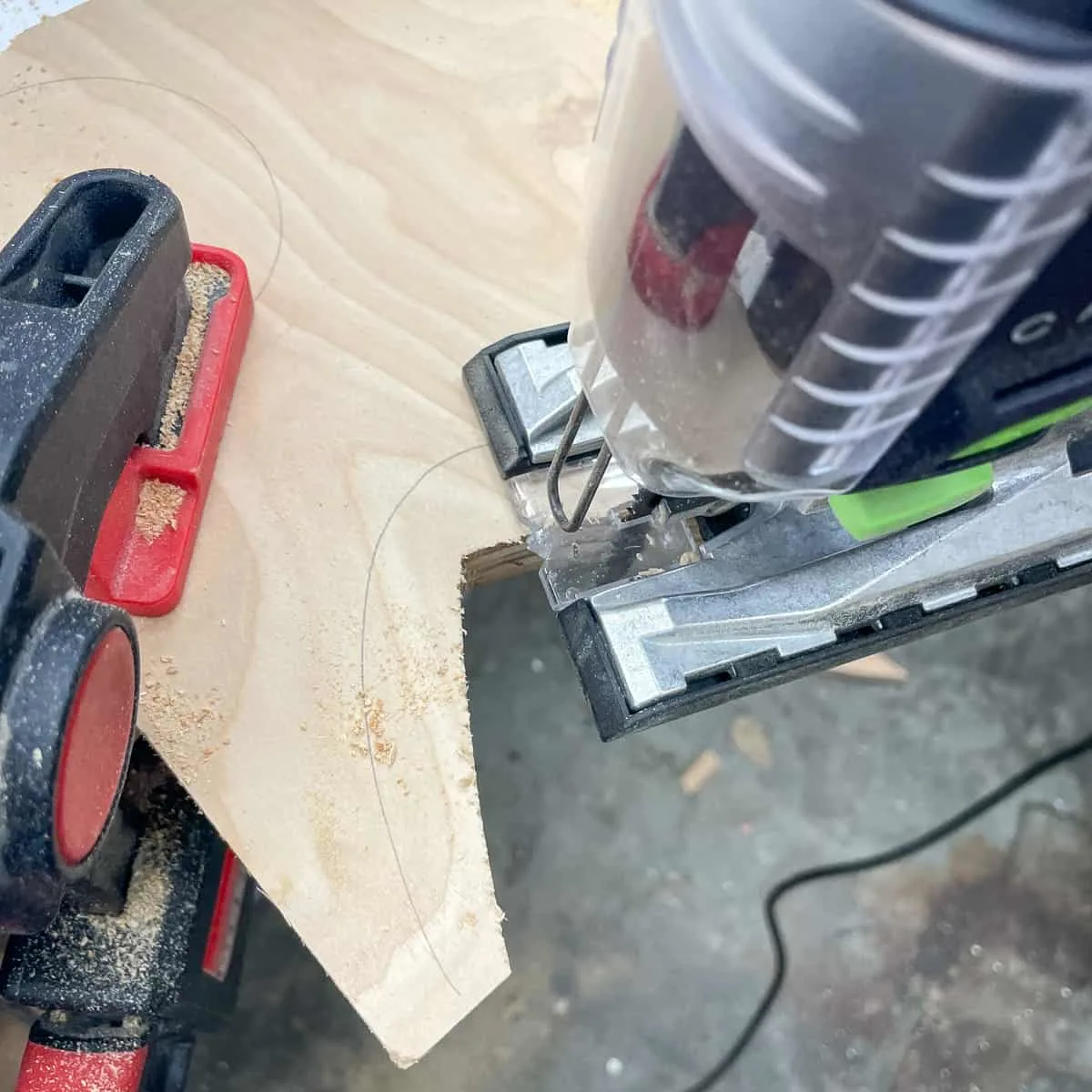
Frequently Asked Questions about Jigsaws
Why Won't My Jigsaw Cut Straight?
One of the downsides to the jigsaw is difficulty cutting accurate straight lines. You may just need to practice. However, you could try a jigsaw guide. These attachments will keep your saw on track.
Can You Cut 2x4s with a Jigsaw?
Yes, you can cut 2x4 lumber with a jigsaw. But make sure your blade extends at least an inch below the wood when fully extended. If you use a blade that is too short, the saw could buck the wood.
However, the resulting cut won't be particularly clean or accurate. The thick material of a 2x4 can cause the thin jigsaw blade to flex, giving you a wobbly cut edge.
Why is My Jigsaw Cutting at an Angle?
The blade may be bent, or you may need to check the angle of your base plate. Ensure your blade is set to a 0-degree angle. Also, remember to keep your base plate flush with the material - this will minimize side-to-side wiggle.
What is a Circular Saw?
The circular saw is similar to a table saw as it cuts with a spinning blade. But instead of pushing the wood through the blade, like a table saw, you bring the blade to the wood with a circular saw.
Circular Saw Blade
The circular saw blade is shaped like a disk. The most common size for a circular saw blade is 7.25 inches. However, you can purchase smaller blades at 5.5 inches.
The number of teeth on a circular saw blade matters. Like the jigsaw, high tooth count blades are designed to give you a clean cut. Blades with higher tooth counts are also suggested for cutting hardwood. Blades with a low tooth count will cut wood faster.
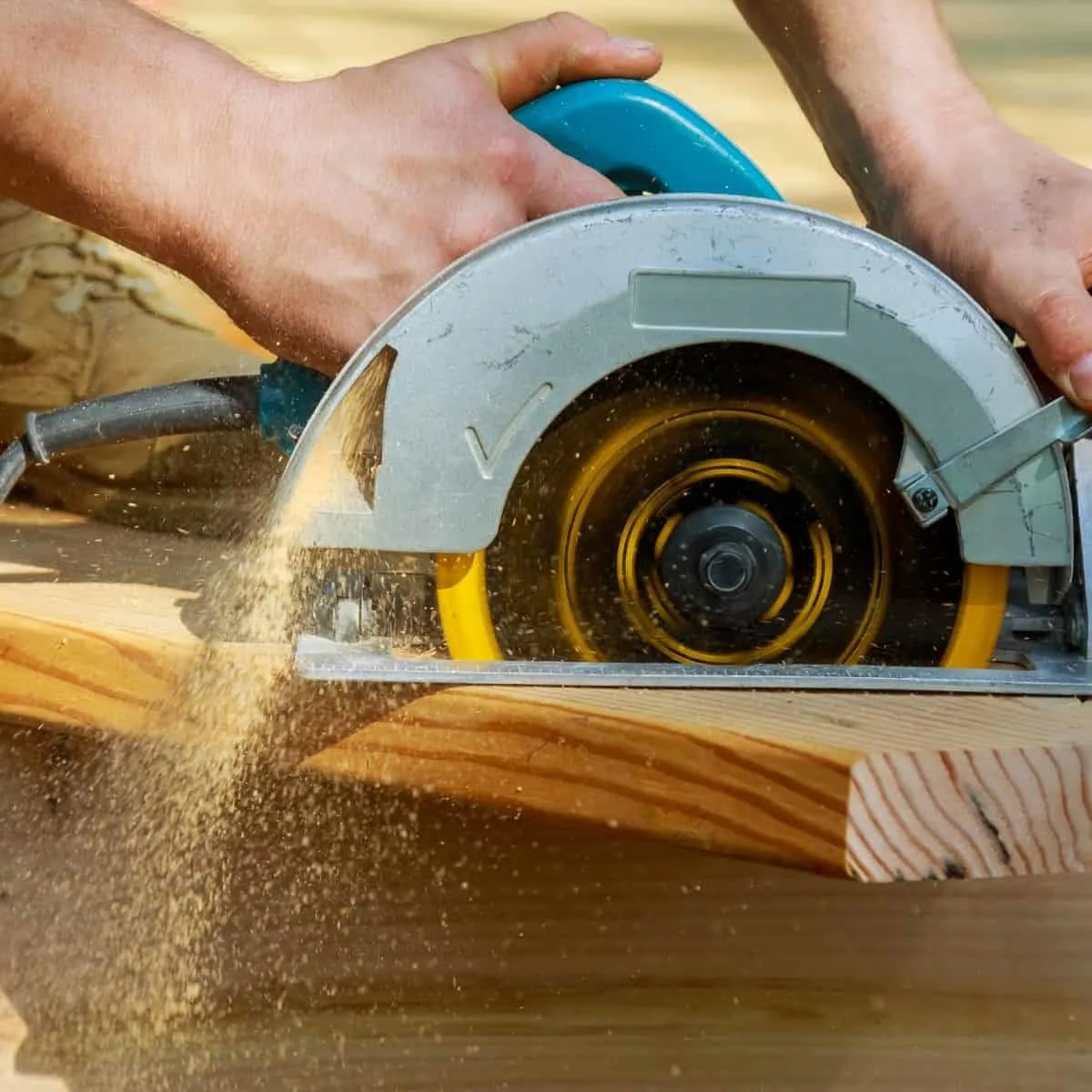
The circular saw blade can usually be adjusted for the depth, allowing you to make deep or shallow cuts. This is especially helpful when making grooves that don't cut all the way through the board.
When Should I Use a Circular Saw?
Circular saws are great for any kind of straight cut. It's especially useful for making long straight cuts in plywood that are too big and awkward for the table saw.
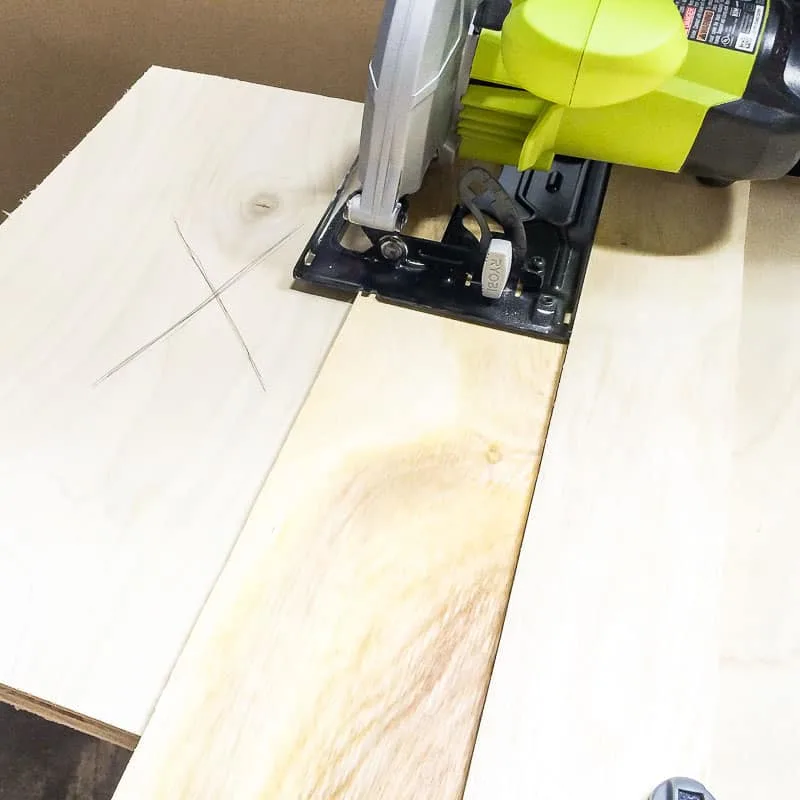
A circular saw can take the place of a table saw or miter saw, although setting up the cut is more difficult and time consuming. I have a separate article on the difference between a miter saw vs a circular saw here.
If you only have room in your budget for one cutting tool, I'd recommend the circular saw. If you're struggling to get straight, clean cuts, you might want to upgrade to a track saw instead. You can find out more about a track saw vs circular saw here!
Frequently Asked Questions about Circular Saws
Which is More Useful - Jigsaw or Circular Saw?
The jigsaw may be more useful for a wide range of tasks. But it can be more difficult to get clean, straight cuts with the jigsaw's flexible blade. A circular saw will give you better results, but it's a little more intimidating for a beginner.
My advice: get both! I recommend buying an inexpensive cordless model of the same brand, so you can switch out the battery between the two tools. I used a Ryobi jigsaw and circular saw for many years before I felt the need to upgrade.
The jigsaw and the circular saw make up the foundation of tools every beginning woodworker should own and know how to operate safely.
Are Cordless Circular Saws Worth It?
Yes, a cordless circular saw is worth it! Many times, you'll need to use a circular saw someplace outside your workshop or garage, and dragging an extension cord out is such a hassle. Plus, you run the risk of accidentally cutting through the cord and causing electric shock!
I hope this article cleared up any confusion you might have about circular saws vs jigsaws. If you have any questions, feel free to ask in the comments below!
Check out these other beginning woodworking tutorials!

